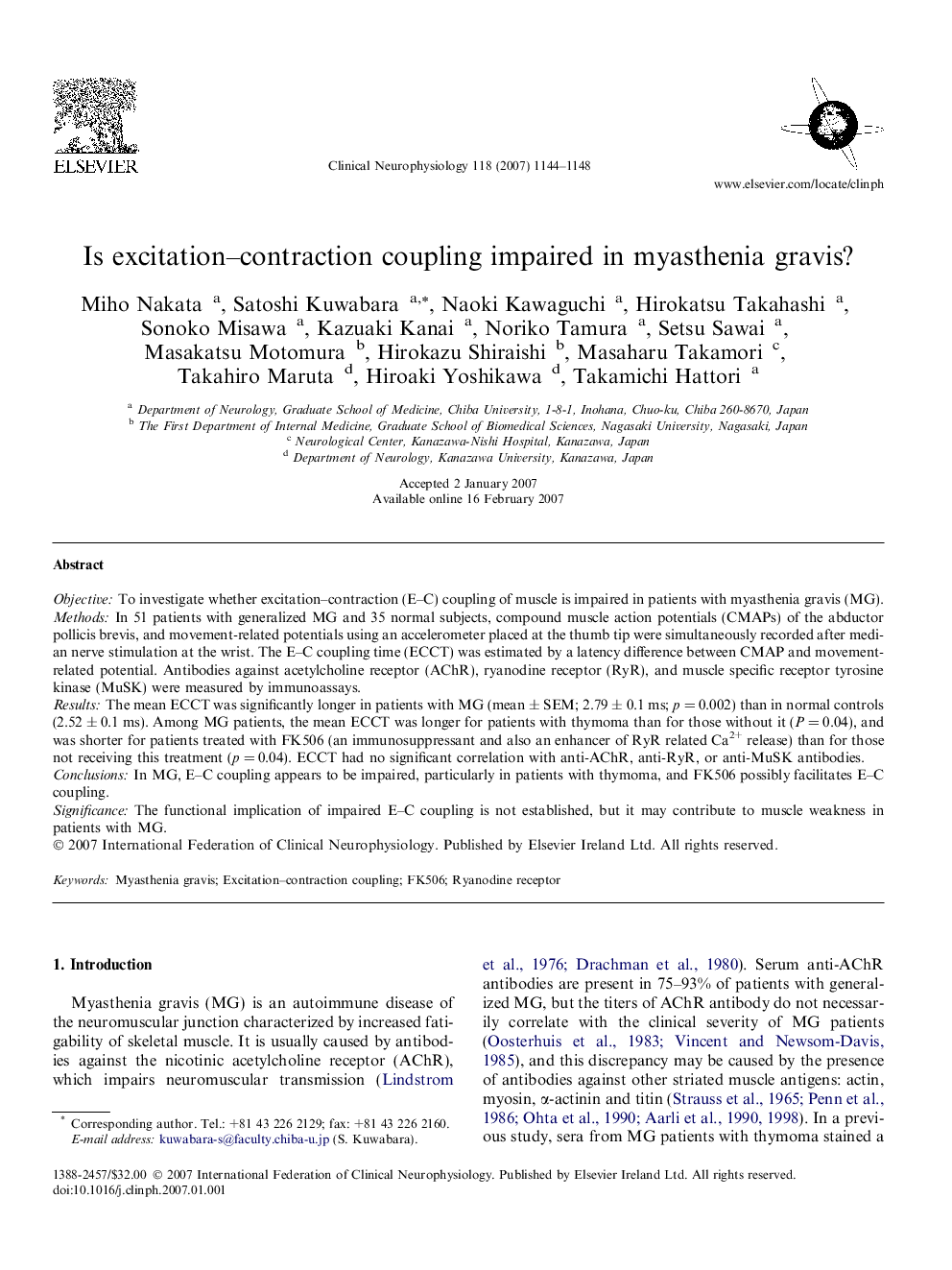| Article ID | Journal | Published Year | Pages | File Type |
|---|---|---|---|---|
| 3048536 | Clinical Neurophysiology | 2007 | 5 Pages |
ObjectiveTo investigate whether excitation–contraction (E–C) coupling of muscle is impaired in patients with myasthenia gravis (MG).MethodsIn 51 patients with generalized MG and 35 normal subjects, compound muscle action potentials (CMAPs) of the abductor pollicis brevis, and movement-related potentials using an accelerometer placed at the thumb tip were simultaneously recorded after median nerve stimulation at the wrist. The E–C coupling time (ECCT) was estimated by a latency difference between CMAP and movement-related potential. Antibodies against acetylcholine receptor (AChR), ryanodine receptor (RyR), and muscle specific receptor tyrosine kinase (MuSK) were measured by immunoassays.ResultsThe mean ECCT was significantly longer in patients with MG (mean ± SEM; 2.79 ± 0.1 ms; p = 0.002) than in normal controls (2.52 ± 0.1 ms). Among MG patients, the mean ECCT was longer for patients with thymoma than for those without it (P = 0.04), and was shorter for patients treated with FK506 (an immunosuppressant and also an enhancer of RyR related Ca2+ release) than for those not receiving this treatment (p = 0.04). ECCT had no significant correlation with anti-AChR, anti-RyR, or anti-MuSK antibodies.ConclusionsIn MG, E–C coupling appears to be impaired, particularly in patients with thymoma, and FK506 possibly facilitates E–C coupling.SignificanceThe functional implication of impaired E–C coupling is not established, but it may contribute to muscle weakness in patients with MG.
